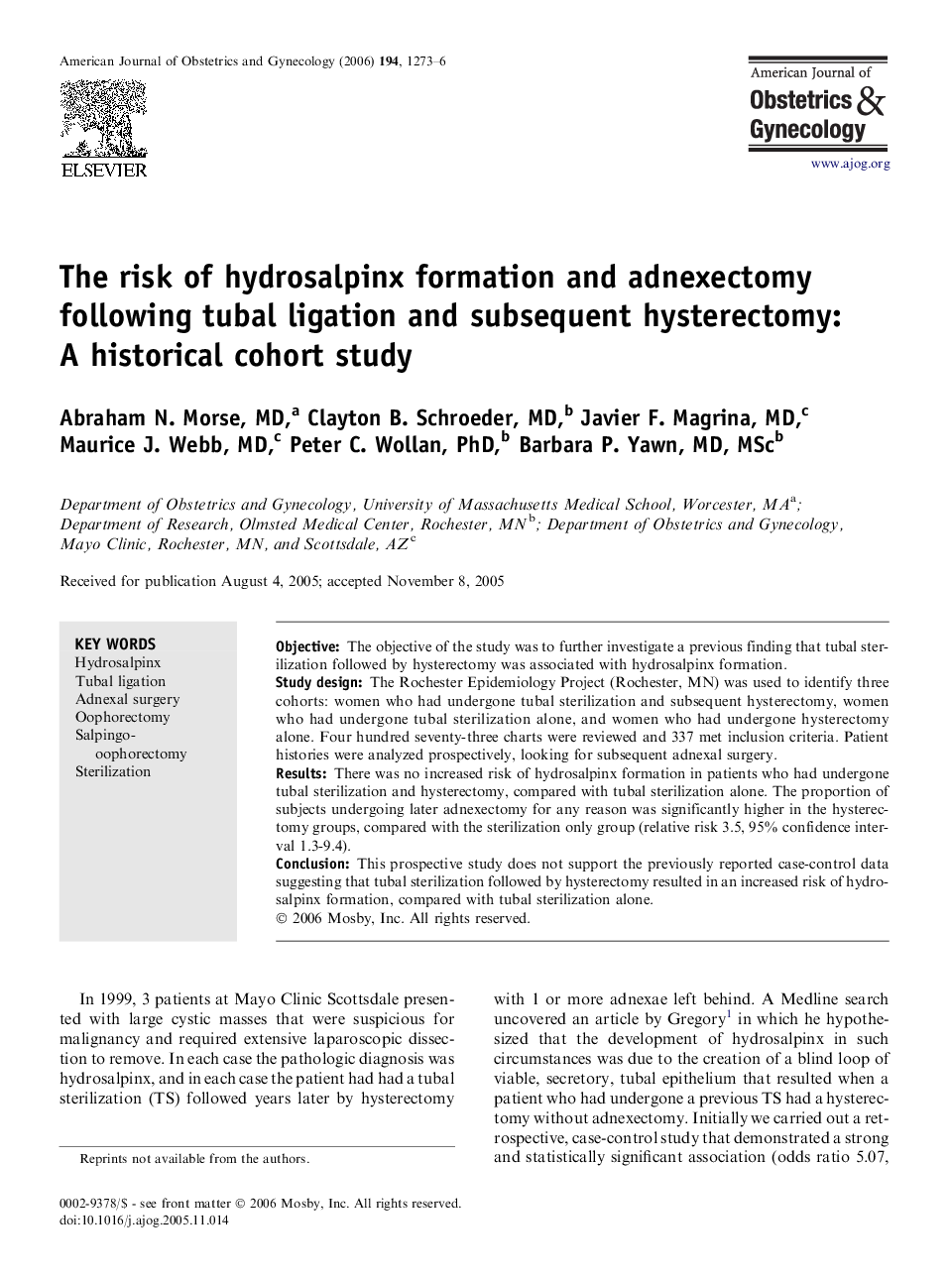| Article ID | Journal | Published Year | Pages | File Type |
|---|---|---|---|---|
| 3442705 | American Journal of Obstetrics and Gynecology | 2006 | 4 Pages |
ObjectiveThe objective of the study was to further investigate a previous finding that tubal sterilization followed by hysterectomy was associated with hydrosalpinx formation.Study designThe Rochester Epidemiology Project (Rochester, MN) was used to identify three cohorts: women who had undergone tubal sterilization and subsequent hysterectomy, women who had undergone tubal sterilization alone, and women who had undergone hysterectomy alone. Four hundred seventy-three charts were reviewed and 337 met inclusion criteria. Patient histories were analyzed prospectively, looking for subsequent adnexal surgery.ResultsThere was no increased risk of hydrosalpinx formation in patients who had undergone tubal sterilization and hysterectomy, compared with tubal sterilization alone. The proportion of subjects undergoing later adnexectomy for any reason was significantly higher in the hysterectomy groups, compared with the sterilization only group (relative risk 3.5, 95% confidence interval 1.3-9.4).ConclusionThis prospective study does not support the previously reported case-control data suggesting that tubal sterilization followed by hysterectomy resulted in an increased risk of hydrosalpinx formation, compared with tubal sterilization alone.
